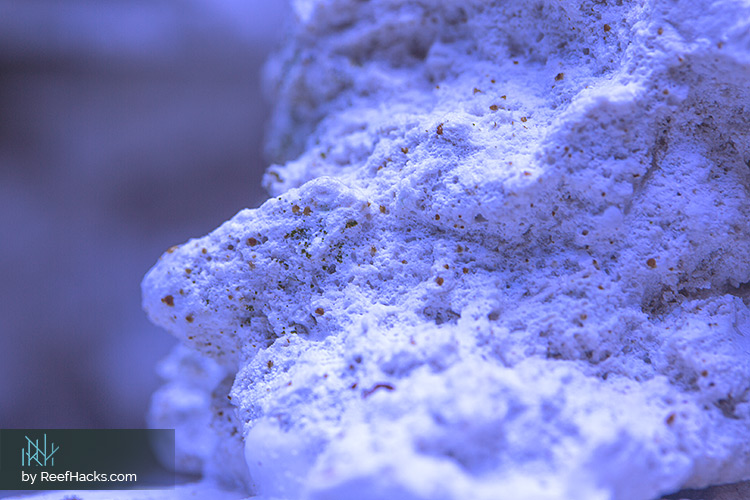Several weeks ago, while browsing my local aquarium shop, I overheard a middle-aged woman talking to the clerk. Yes, I know, I shouldn’t be eavesdropping. But the frustrated tone in her voice peaked my interest.
Nonchalantly, I made my way closer to see if I could hear exactly what they were discussing. That’s when I heard her, “I just don’t think I know what I’m doing. I’m afraid I’ll hurt my corals.”
Now, obviously, I was quite intrigued. If you haven’t noticed, saving aquariums from an untimely end is the fuel powering my passion. Shortly thereafter, this frustrated and defeated reefer revealed the source of her malcontent: nitrogen cycle.

Author:
As a lifelong aquarist, Yuliya has an endless curiosity about our underwater universe. After graduating with a bachelor’s in Environmental Engineering, she transformed her passion into a successful career. While working at the Institute of Environmental Protection in Moscow, her passion for saltwater and reef aquariums only increased. Moving to the United States in 2013, Yuliya embarked on another impactful journey by sharing her unprecedented experience for all aquarium hobbyists ... Read More.
Without hesitation, I strolled over to the frag tank of SPS frags she was hovering over. And when the time was right, I introduced myself and began what turned out to be a two hour conversation.
This is a perfect example of how many reefers feel about aquarium nitrogen cycle. For something that’s so important, it’s surprising just how mysterious this task remains. Over the years, I’ve spent countless hours researching the multitude of products and techniques on salt water tank cycling.
And I’ve tried them all.
So what have I learned? Cycling saltwater tank is a realm of confusion. But it doesn’t have to be. While reefing forums are flooded with advice and opinions, most are just that: opinions.
In my years diving throughout the depths of reef keeping, I’ve picked up a few hacks along the way. And as products and technology advance, these hacks keep getting easier and simpler to implement.
Of course, the only way to master aquarium cycling is to understand:
- Why you need to be cycling a reef tank.
- How to cycle a tank?
- Why nitrogen is so important to marine life.
- The basic steps of cycling a saltwater tank.
- Reputable products.
- Signs and symptoms of both good and bad cycling.
Okay, if you’re a complete novice, these may seem impossible to learn in a single guide. While this topic isn’t a walk in the park, it’s not anymore difficult to understand than any other reef tank process.
With that in mind, let’s finally answer the question: How do you cycle a reef tank?
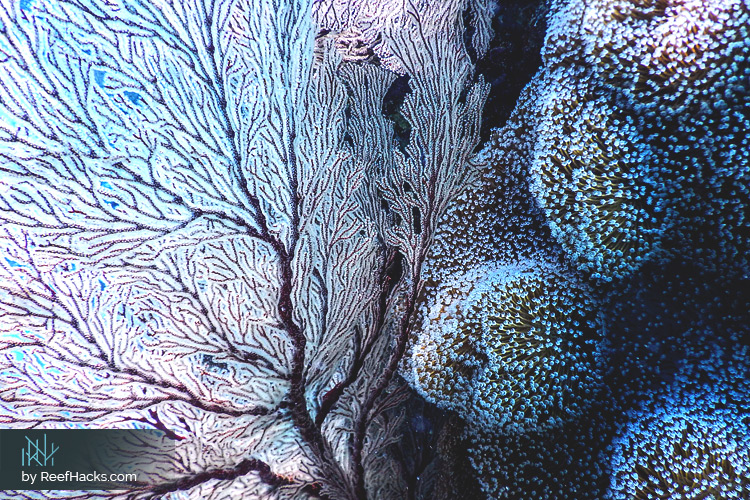
Nitrogen Cycle Definition - The Basics. How to cycle a tank?
If you remember your early years in science class, then nitrogen isn’t necessarily a foreign term. But do you remember why nitrogen is such an invaluable component for life?
In the most basic definition, nitrogen is one of the most common nutrients found in literally…well…everywhere! From the smallest creature to the biggest planet, nitrogen is one of the fundamental elements for life itself.
Within living organisms, like coral and your Aunt Carol, nitrogen is an important component for everything from proteins to your DNA. Without this integral element, we simply wouldn’t exist.
So, if nitrogen is everywhere, why do we worry about cycling?
This is a pretty common question by curious newbie reefers. The simple answer is because the watery world in your living room isn’t the ocean. Essentially, the purpose of nitrogen cycling is the same reason why nutrient export, reef lighting systems and reef salt mix type are important: replicate the natural world in an enclosed environment.
Okay, I get it. But what exactly is nitrogen cycling?
To best understand, let’s take a brief look at how this process is done in the wild. The American Society for Microbiology has a lengthy explanation, but if you’re not in the mood for a scientific journal entry, here’s a rundown:
- Atmospheric nitrogen is literally dissolved into seawater. This freshly dissolved element rests along the oceans surface. But in this state, it’s relatively useless for living organisms.
- Bacteria within the ocean absorb nitrogen. This is when the magic happens. Bacteria converts nitrogen (N2) into ammonium (NH4+) in a process called nitrogen fixation. Without this conversion, no living creature could benefit from this fundamental element.
- When this bacteria die and decompose, ammonium is released into the water, which is known as Dissolved Organic Nitrogen (DON) and Particulate Organic Nitrogen (PON).
- Ammonium can also be converted into nitrites, and then ultimately nitrates. This is referred to as Nitrification.
- Other organisms living in the water transform the DONs and PONs back into ammonium, which is known as Remineralization.
- Lastly, to complete the nitrogen cycle, there are other forms of bacteria that convert the potentially harmful nitrite and nitrate back to its original form, nitrogen gas. This final stage is known as Denitrification.
Essentially, the core of the nitrogen cycle is bacteria. But not just any bacteria will do. As you can see, specific microbes convert and release nitrogen in a “dangerous” form, while others extract these compounds and reconvert them into a non-harmful element.
Okay, this may be more than what you wanted to know, but it’s important to understand the role of bacteria. Otherwise, you truly won’t grasp how this vital aquarium task impacts the continued health and stability of your own underwater universe.

Nitrogen Cycle Steps in Your Aquarium.
Now that we’ve got most of the science out of the way, how do you replicate this process in your saltwater aquarium?
Here’s the easiest way I can describe cycling a reef tank:
- Water is added to an empty aquarium.
- Bacteria’s then introduced and begins to populate everything in the tank.
Doesn’t seem that complex, right? Well, if you haven’t learned anything about reef keeping just yet, remember this: sometimes the easiest processes to explain become the most difficult to master.
The Foundation of Cycling a Reef Tank - Bacterial Products.
If you’ve read any of our previous guides and reviews, then you’re familiar with our stance on claiming a specific brand or product as “best.” Because reef tanks are as unique as the reefers tending to them, it’s almost impossible to define a single product as the perfect option for everyone.
But, there are some brands that clearly outshine others in terms of quality, consistency and variety. When it comes to cycling a saltwater tank, there’s several options I recommend. These include:
I’ve used each of these products with pretty great success rates. If you’re interested in learning more about the various aquarium cycling products worth investigating, I’d stick with this list.
However, my personal favorite isn’t on this list. Over the past few cycling adventures, we’ve used Red Sea Reef Mature Pro Kit for our Reef Hacks tanks. While the aforementioned products definitely deliver, Red Sea has once again claimed the position as my personal favorite brand.
What’s the difference between the Reef Mature Pro Kit and the others? I’m glad you asked…
Reimagined Reef Tank Cycling for Refined Results.
Don’t worry, this isn’t about to turn into an infomercial. Since one of the most common questions I’m asked when it comes to cycling a reef tank is what bacteria products I recommend, this seems like the perfect opportunity to explain my official answer.
Red Sea is, in my opinion, one of the greatest reefing brands. From its brilliantly designed REEFER 170 tank to the renowned Red Sea Reef Care Program, this company has quickly transformed the ease, efficiency and accuracy of reef keeping.
And they’ve done it again with the Reef Mature Pro Kit.
What initially attracted me to this product, beyond its brand, was the complexity of its formula. Few products are capable of supporting such biological maturation across the board. Of course, the product layout and streamlined dosing requirements didn’t hurt.
Here’s why the Reef Mature Pro Kit has become my favorite cycling product:
- Complete Nitrogen Cycle Support - This product offers a complete array of bacteria to establish a full saltwater tank cycle. Colonies include anoxic bacteria, which captures phosphates and denitrifiers water. However, the coolest part is its ability to promote coralline algae growth. Not sure why you want to promote algae? Coralline algae isn’t what you might expect. Check out our article, The Hue of Health - Coralline Algae and see why.
- Distinct Products/Formulas - The kit comes with four specific products.
These include:
- Nitro Bac - Nitrifying and denitrifying bacterial spores, which seed substrate, biomedia and other surfaces.
- Bacto Start - Nitrogen and phosphorous elements designed to simulate the type/concentration of waste commonly found in a healthy, established aquarium. This is paramount for controlled anoxic and aerobic bacteria growth.
- No3:PO4X - Carbons and other specific organically bonded elements needed to control nitrate/phosphate levels, which plays an important role in controlling algae growth.
- KH-Coralline Gro - Known as a marine buffer complex of minor and trace elements, this product promotes coralline algae growth and other beneficial micro fauna.
Of course, this wouldn’t be much of a hacking resource if I didn’t explain how to use Red Sea’s Reef Mature Pro Kit for optimum efficiency. Here’s a brief rundown:
- When using dry rocks, which in my opinion should be the only kind you use, the time it’ll take to complete a saltwater tank cycle will likely be closer to 30 days, not 21 days that’s stated in the manual. In fact, this is the duration you should expect whenever cycling a tank with dry rocks.
- While live wet rocks should be avoided, I’ve found great success using Xport Bio Bricks. This simple and effective addition to your tank offers ample surface area for bacteria colonies to thrive. Definitely worth checking out for your system.
- After testing the water around the 21st day, I make sure everything’s coming along as it should. Unlike the manual, which says you can begin to introduce herbivorous fish at this point, I typically wait until the full 30 days before adding any fish. Better be safe than sorry.
- Around the 7th day, replace roughly 5% of systemwide water with freshly mixed saltwater. Be sure to test its salinity and temperature after changing the water. On average, you’ll do this again on the 14th day, as well as on the 21st day. Each water change should be around 5% of system water.
- Don’t be scared if you see cloudy water or brown algae while cycling, it's normal and called - new tank syndrome. This is completely normal! While it may look gross, there’s nothing to be concerned about. In fact, cloudy water is a sign that bacteria is growing and everything’s on track. Here’s what you can expect visually during a complete 30 day nitrogen cycle (check out our pictures below):
- Day 1-9: Extremely cloudy water caused by an intense bacterial bloom.
- Day 10: Water has cleared, sometimes to the point where you’d describe it as being “crystal clear.”
- Day 12: Small diatom spots will begin to appear.
- Day 15-30: Diatoms coverage continues to increase.
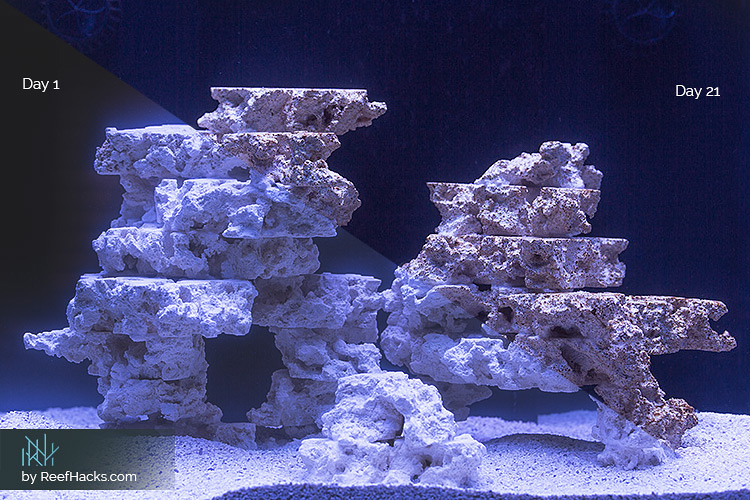

Day 12
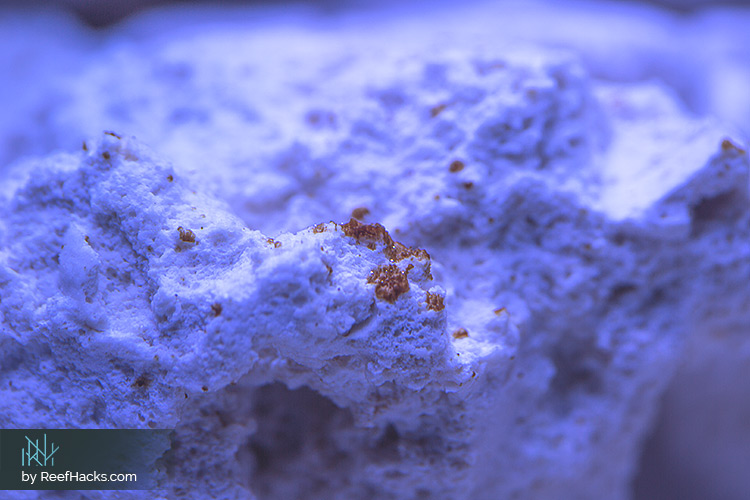
Day 12
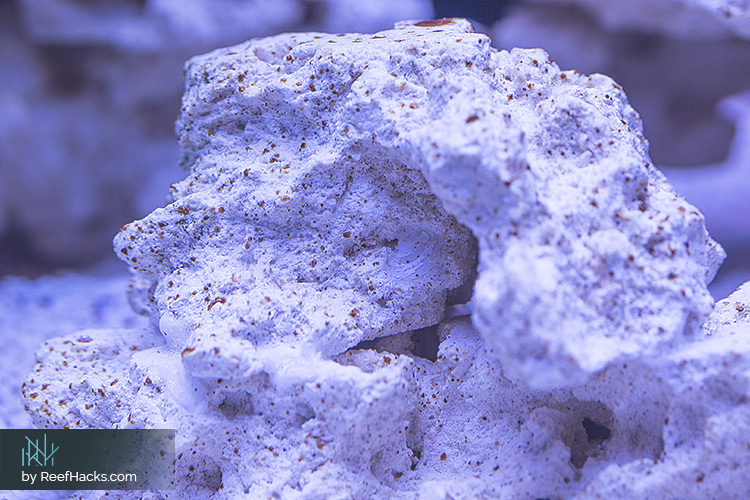
Day 13
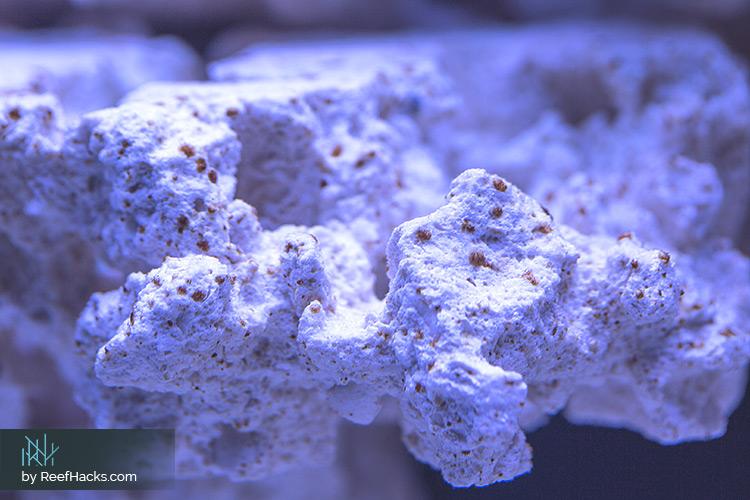
Day 13
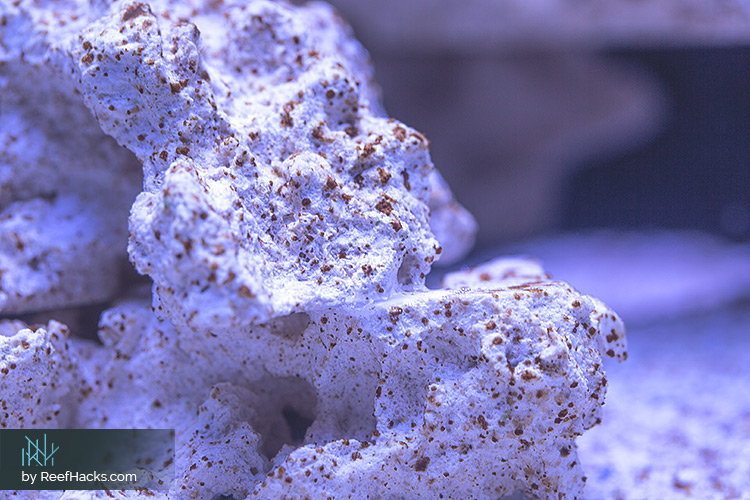
Day 14
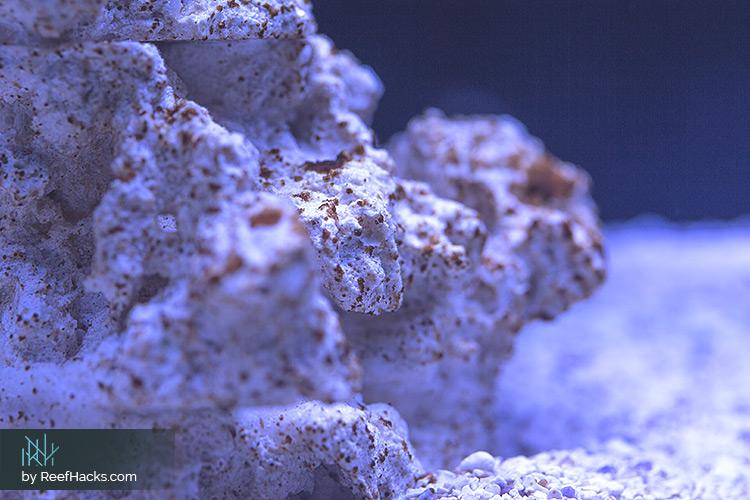
Day 18
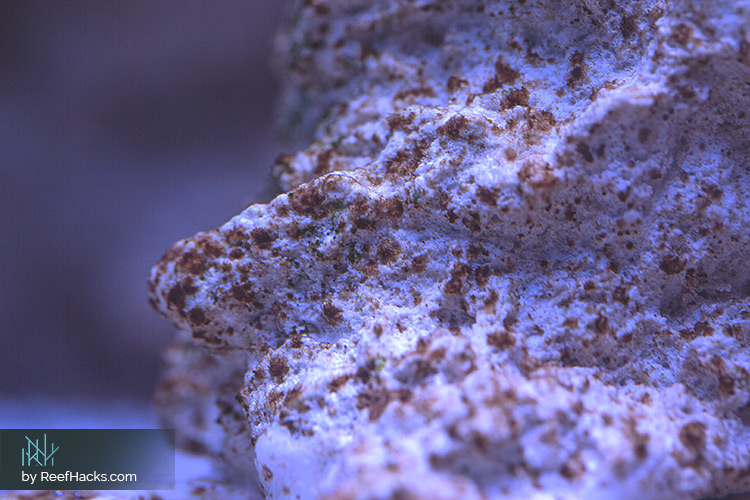
Day 19
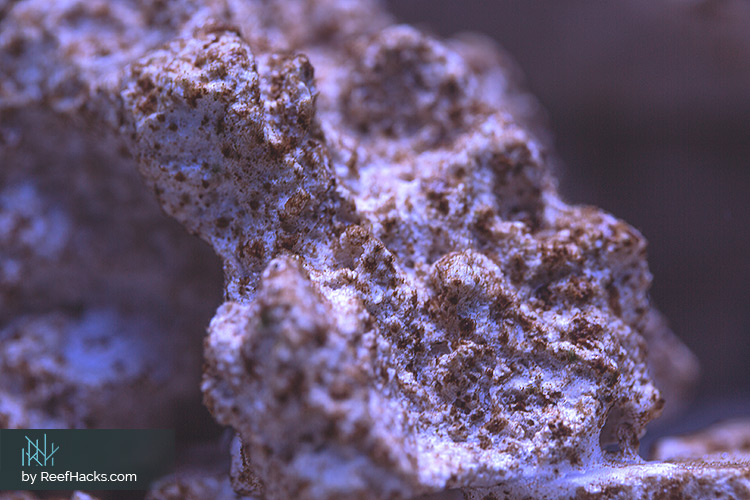
Day 21
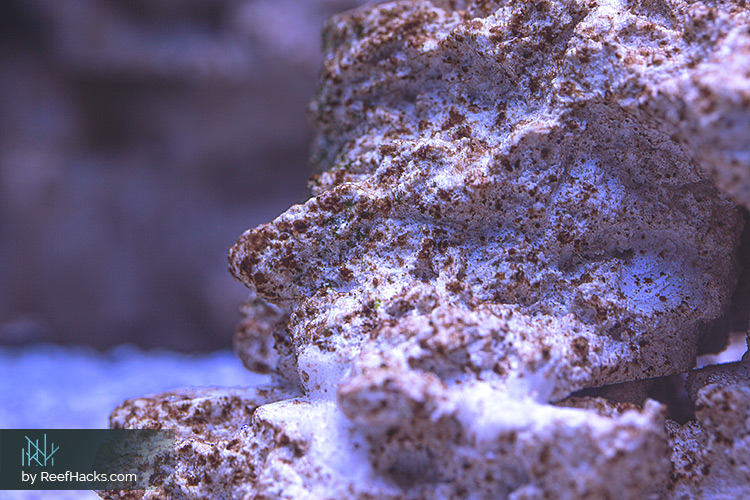
Day 22
Day 30 - Last Day Of The Cycle: Time to add the Clean Up Crew.
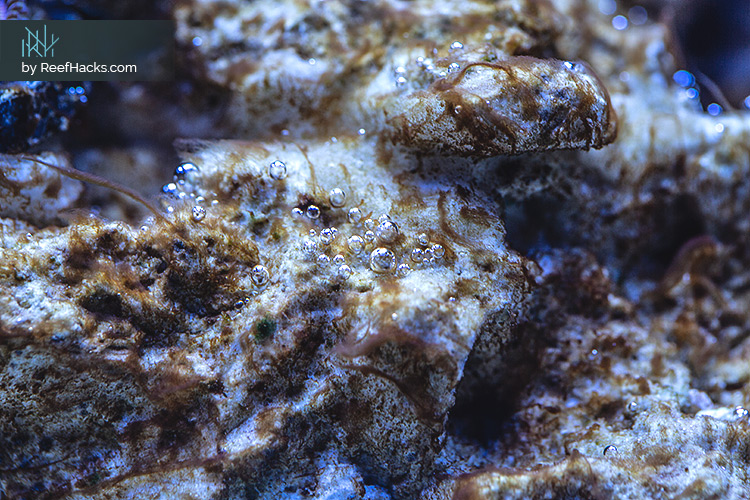
- In terms of tank equipment, everything should be up-and-running. This includes your skimmer. However, DO NOT use any type of denitrification system or any product that removes nitrates or phosphates, such as GFO, during while your tank is cycling.
- Lighting is very important while cycling a saltwater tank. I’ve found keeping lights on for 10-12 hours produces the best results. I just run my regular lighting schedule during the cycle.
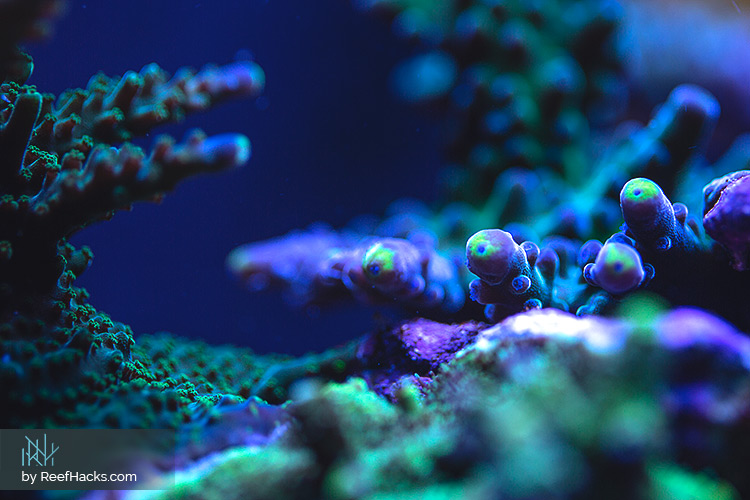
The Cycle is Complete - Final Thoughts.
Although there’s many other topics I could’ve touched on, the above is essentially everything you need to know for a successful saltwater tank cycle. Once cycling is complete, don’t be scared if you see extra algae or things aren’t looking as beautiful as you’d want, new tank syndrome is absolutely normal.
Stay tuned for our next guide discussing one of the most important measures you can take to get your reef tank looking as fresh and vibrant as you’ve dreamed. Yes, I’m talking about the infamous CUC (Clean Up Crew) aquarium additions.
As always, visit our Facebook page to send us a message or leave a comment about nitrogen cycling, product help or just to showcase your own tank! On behalf of the entire Reef Hacks crew,
Happy Reefing!
by Yuliya Ivanova for ReefHacks.




